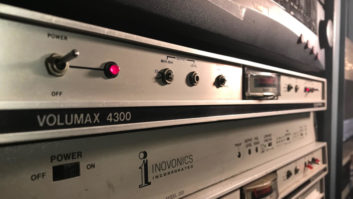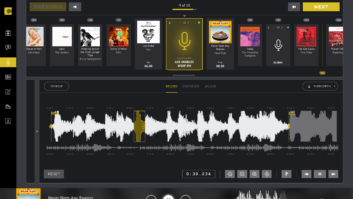Larry Langford makes some excellent points in his “AM Preemphasis — Time for a New Curve?” article. In the current manual for Orban’s XPN-AM processor (currently in beta), I wrote last year that “the receiver equalizer is of limited benefit to narrowband radios with abrupt rolloffs. We believe that these radios benefit more from a boost at 3 kHz, combined with very little HF shelving EQ. These radios have almost no response at 5 kHz and above, so boosting frequencies above 5 kHz wastes modulation. Using a bell-shaped boost at 3 kHz causes the boost to decline naturally at frequencies that the radio cannot reproduce. You can use the midrange, all-frequency, or HF parametric equalizer to create such a boost.”
[Read: AM Preemphasis — Time for a New Curve?]
Anyone who is serious about developing non-NRSC equalization to overcome the HF limitations of typical AM radios should seek out the summary of the 2006 NRSC study “Consumer Testing of AM Broadcast Transmission Bandwidth and Audio Performance Measurements of Broadcast AM Receivers,” by Dr. Ellyn G. Sheffield and John Kean.

From that study Figure 1 shows the mean and standard deviation frequency response curves for the 30 consumer AM receivers measured in this study. The mean –3 dB frequency is 2450 Hz and the mean –10 dB frequency is 4100 Hz.
In Orban processors, instead of using a bell-shaped equalizer, you can try using the shelving receiver equalizer (which provides a third-order boost starting at 2 kHz) in combination with a relatively low frequency setting of the low-pass filter (like 5.0 kHz).
To address Larry’s concerns about filter ringing, Orban AM processors starting with Optimod-AM 9300 offer a parametric cut-off shape that controls the sharpness of the transition region between the filter’s passband and stopband.
Those interested in the detailed curve shapes of the parametric low-pass filter can download the 9300 manual from ftp.orban.com and look at Figure 2-7 on page 2-33. Compared to using the bell-shaped second-order peak EQ, the audible results of using the shelving EQ/parametric low-pass filter technique will depend on the individual radio being auditioned and is, to an extent, a matter of taste, although it is important to test any settings on several radios representative of the lowest and highest bandwidths that appeared in the NRSC study cited earlier.
AM processing requires more compromises and judgement calls than any other type of processing because it can’t ever be “high fidelity” (the radios’ bandwidths simply don’t permit it) and because the disparity between radios is so large. In my opinion, the goal should be highly intelligible, smooth, non-fatiguing sound quality regardless of which receiver a listener uses. It’s the most extreme example of trying to “pack a gallon of sound in a one-quart container,” and it’s one of the most difficult challenges in broadcast engineering. Fortunately, modern Optimod-AM processors give practitioners all the tools they need to customize AM receiver equalization to their preferences and the needs of their target audiences.
Radio World invites industry-oriented commentaries and responses. Send to Radio World.












